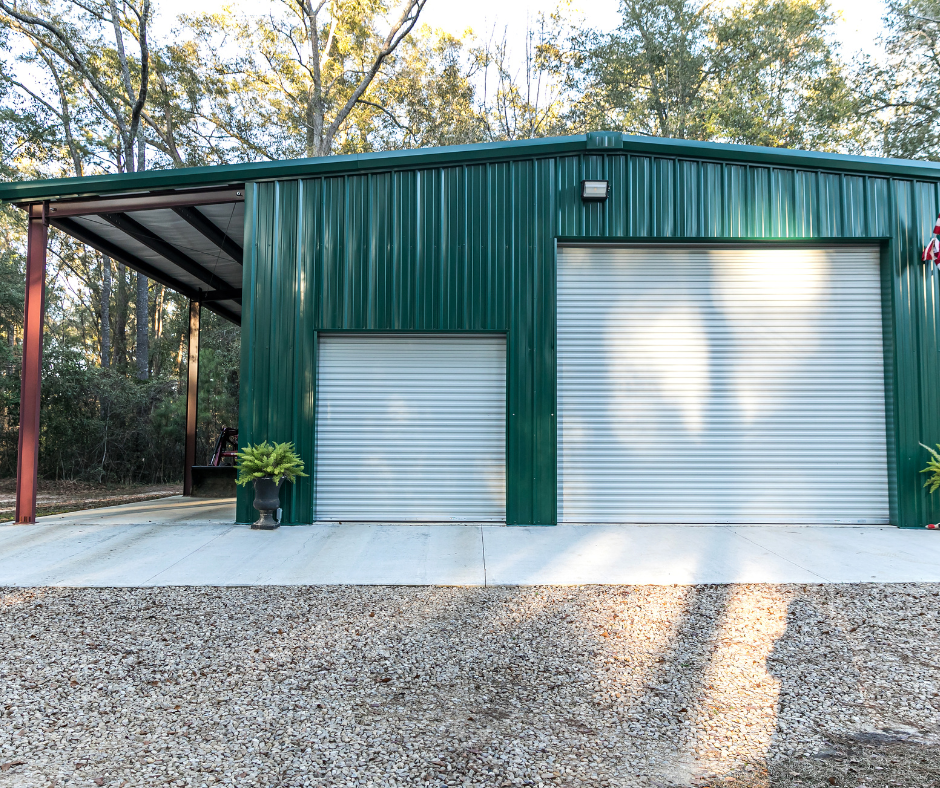There’s a lot you can accomplish with multiuse prefabricated steel buildings. Steel is an ideal building material for a few different reasons: It can be formulated with different amounts of carbon for the exact weight, strength and ductility to suit your needs. Steel doesn’t attract pests like organic building materials do, and sealant can be applied to take care of condensation, mold and rust. Steel building components are often the most economical choice for a wide range of uses. Adding a loft or a mezzanine to your steel building can help you get the most out of your investment.
There are a few things to know before you start looking at materials for your steel building with a loft. If you’re adding living quarters to your steel building, you’ll need to think about basic utilities like plumbing, electricity, water, cable and internet. Whatever uses you have in mind, checking your local building codes is an important step.
This article will cover everything you need to know about building a lofted steel structure or adding a loft to your steel building.
What are some common uses of steel buildings with lofts?
Many steel buildings are primarily barns, garages, workshops and recreation buildings. Adding an enclosed loft space can accommodate a studio, an office, a study room, a rec room or a bedroom for a comfortable place to rest after a long night. You could also go with more of an open interior or leave the loft space open for a rooftop feel. Use your loft as an entertainment room within your man cave or she shed. Or make it a metal barn with fully furnished living quarters or a dormer unit.
Here’s a list of some creative uses for a steel building with a loft:
- Barndominium to house people and animals.
- Recreation building with a yoga studio or running track.
- Garden shed with a greenhouse.
- Restaurant with a rooftop dining space.
- Barn with a hayloft.
- Garage with an equipment loft.
- Warehouse with a storage loft.
Your guide to steel buildings with lofts
The possible uses for a lofted steel building really are endless. But your intended uses will inform some of the decisions you’ll need to make. The potential uses for both levels will help you determine what state building codes will apply. These can be very general; for instance, a steel building with loft living quarters will have slightly different regulations than a utility shed or a commercial space with a storage loft.
Follow these steps to make sure your steel building with a loft space will be safe and useful for your intended purposes:
- Check your local building codes
Building codes tell you what structures with different uses need to ensure safety during natural disasters and accidents. You may find code requirements for the dimensions of your stairs, separation between different use areas, fire safety equipment, ventilation systems, insulation, and more. In addition to legal compliance, following local codes is an important way to keep your building safe.
- Start with a continuous foundation
If you already have a steel building that you want to modify with a loft, you’ll need to determine if your building can support a second story. It should have a solid continuous foundation so that heavy items and supports will be stable. It’s important to note that some steel buildings might not have a continuous foundation — some cold-formed steel buildings and pole barns are lightweight enough to sit on a concrete slab or a plain dirt floor. If this is the case, you may be able to add a lofted area for storage, but it won’t support a lot of weight.
- Determine how much ceiling clearance you’ll need
One of the most basic things your local building codes can tell you is how tall a metal building needs to be for a safe and compliant loft space. Building regulations in most states require a minimum ceiling height of about 7.2 feet. If you’re using your loft space for more than just storage, you’ll need at least that much clearance to meet health and safety standards.
If you’re building from scratch, you can choose your roofing angle and the shape of your loft space. You could go with a simple gable roof with a slight slope or a single-slope roof. Leaving a vaulted ceiling exposed can give your space a lot of character.
- How will you get up to your loft space?
The system for climbing or moving things up into your loft space will depend on the intended use or what kinds of things it will hold. If you’ll be spending time up there, an open mezzanine with stairs and a banister could work nicely. Or you could close off the second story and add a spiral staircase. If your loft will be more utilitarian, a basic open storage loft with a lift system or an exposed ladder could be sufficient. You could also add a folding ladder that pulls down from the ceiling. And finally, many steel barns with hay lofts have a conveyor system for loading and unloading hay bales.
- Consider how much insulation you’ll need
This is another guideline you should be able to find in your local building codes. Steel doesn’t provide any natural insulation — unless you build with insulated metal panels. The type of insulation you use and the amount can vary depending on where you’re building and what your structure will be used for. In most cases, you’ll need a vapor barrier or a radiant barrier to protect the interior side of your steel roof from mold, rust and corrosion. A radiant barrier will keep the inside of your lofted area cool while the sun shines on the exterior roof.
- Prefabricate components for simple construction
Today, working with a company that specializes in prefabricated steel buildings is the best way to ensure a fast, safe and easy construction project. Most of the cutting, processing and assembly work is done at the manufacturing plant. Once the components are delivered to the construction site, there’s very little left to do besides some field seaming to fit the pieces together. Going with a prefabricated steel building can save you money on construction insurance since it’s much safer to build with steel than traditional materials.
Working with a full-service steel building company like National Steel Buildings will also allow you to customize your steel building to suit your specific needs. Instead of translating the same information from an engineer or designer to several different contractors, you’ll have one team and one point of contact you can rely on.
- Plan to expand
If there’s a chance you might want to expand your lofted steel building in a few years, it can be very simple to make sure that’s possible. When you’re creating your initial plans, make sure you mention this to your designer or engineer. They can outline exactly where you can make an addition and provide some details on what that construction process will look like.
Get help planning your steel building with a loft from National Steel Buildings
Building a steel structure with a loft from scratch is the simplest way to ensure that you’re getting the functionality and look you want with the best-quality craftsmanship. We’ve been in the steel building industry for over 35 years, so we’ve seen building trends come and go. Adding a loft or a mezzanine is a great way to maximize the floor space in your building while sticking to your budget.
At National Steel Buildings, we deliver the added bonus of being a certified Varco Pruden Builder. That means we’re approved to represent the country’s second-largest steel building manufacturer. Because we distribute and build on a national level, we can deliver the highest-quality steel buildings at some of the most competitive prices in the industry.
What are you envisioning for the main floor and loft space in your steel building? Contact our team today for more information about our steel building options and pricing.

